Doing It Wrong
**** Sound Nerd Speak ****
I have had quite a few people ask me "how did you come up with the sub layouts?" So, I started thinking about the train of thoughts that is passing by here at the moment. My first experimentation into 'subs pointed the wrong way,' was the Sub Cannon stuff I did with Peppers.
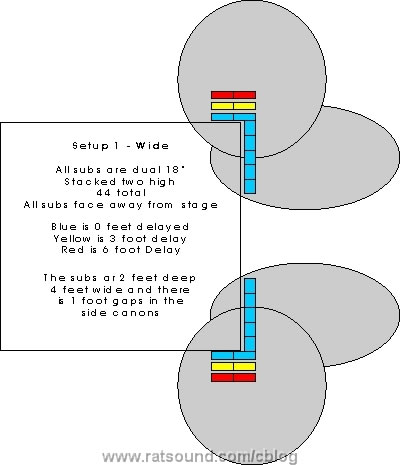
Thought actually they were pointed in the right direction, the setup had one set firing into the back of the next time delayed set. While it worked well, and rear rejection was clearly achieved, cumbersome steering that was realized by adding more or less level to them, so power was wasted if I reduced side coverage. But way before that, all the work I was doing with the MicroWedge designs over a decade ago kept pointing at the assets of physical placements and the importance of versatility. Physical placements, distances and the reducing the sheer physical size of the combined sound sources continue to be a significant challenge in all loudspeaker enclosure/array designs.
For this year's Coachella we did something very similar to the Slotfire setup where it relies on two sub sources 1/3 of a wavelength spaced. But once all the subs were stacked up, what we ended up with is a big wall of subs with a small gap in the middle separating the non delayed versus the delayed. Some delayed 18's were right next to non delayed 18's while others were 12 or more feet away.

Yet we are using a time delay of just 3 ms. The theoretical design is based on two point sources but the whole sub wall thing, while functional, has trouble getting out of it's own way. What we need is two nice clean point sources. But how do you do that with six double 18 boxes that are nearly two feet high and four feet wide?
From yet another angle there was the MicroSub project designed to use the coolness of actually being able to physically configure the boxes themselves to achieve desired results.
Yes subs are very close to omni directional at low low frequencies and since low frequency wave lengths are long, it may seem that these configuration variations would have little or no effect on the output and coverage. But the reality is that there are significant audible differences and once I actually stacked these things up I found the assets of the configurations are even more pronounced than anticipated. The actual direction a sub is pointing does not matter much till you start getting above 60 0r 80 hz. While the 'on axis' focal point and distance between multiple sub sources rapidly gains importance as the frequency is raised.
**** Mini Offshoot Sound Nerd Speak ****
For example. The MicroSubs are 26" wide and 13" high and hold a single 15" speaker. If you stack two directly on top of each other on the floor like 'The Up Up' configuration,
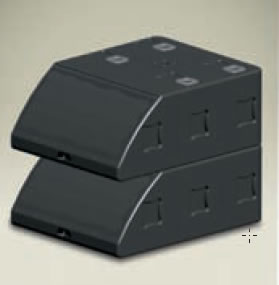
the source dimensions are about 26" high by 15" wide plus ports so about 26"x24".
That would give us a side view pattern of something like:
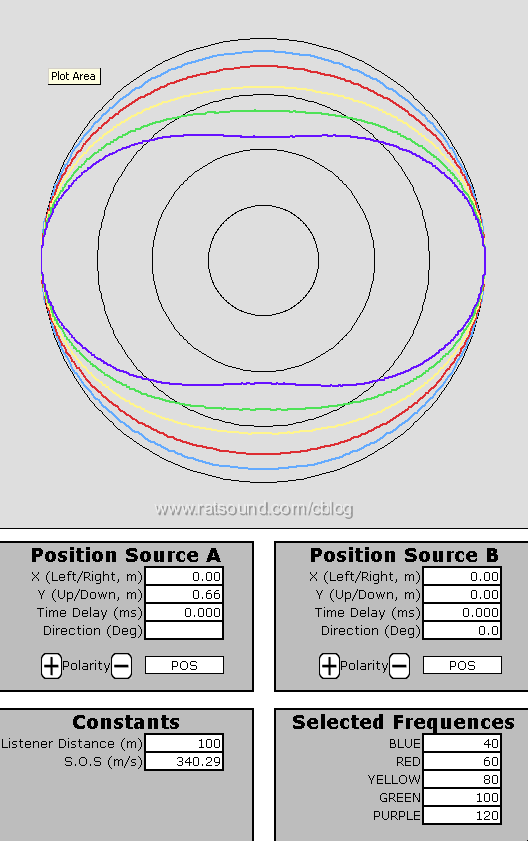
As you can see we have we have reduced the vertical coverage, which optimizes for musicians a bit farther away and blows through the legs of closer artists when used as a sidefill.
Now slide the top MicroSub back till it drops into the 'Laid Back' configuration
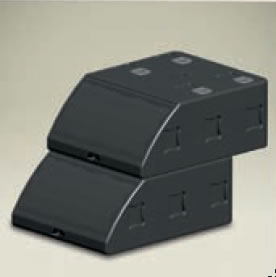
and we now get something more like this
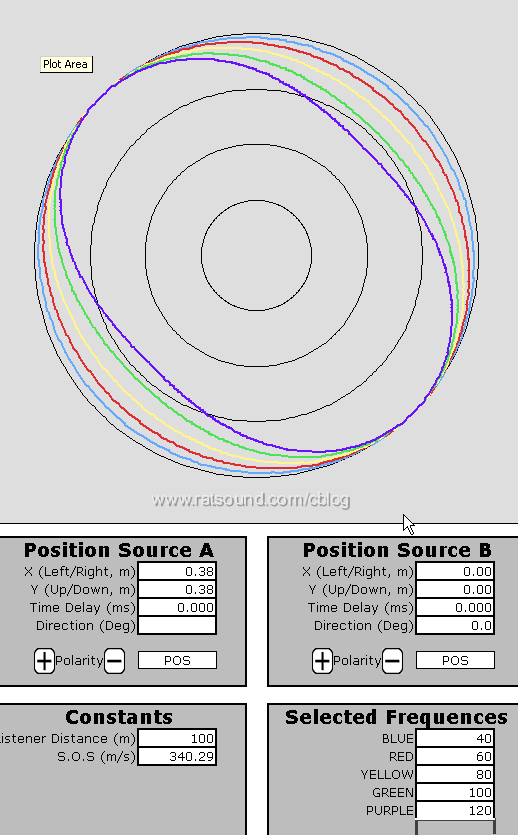
Where there is an up tilt giving us a nearer focus. Here the nearer artist is in the focus while the sound will tend to go over the heads of musicians father away. Plus, this is with just two MicroSubs. The stacked responses are of course achievable with conventional low profile subs but the additional option to utilize the angled configs with the MicroSubs is unique and can be very effective in tackling a wide variety of applications.
**** End Mini Offshoot Sound Nerd Speak ****
Ok, back to Vortex and Slotfire.
Â
So taking what I learned from Sub Cannon's, MicroWedge, MicroSub lets next add in add in the cool enclosure designs like the dV-Sub http://www.l-acoustics.com/fichestech/dvsubgb.pdf where multiple speakers are pointed at each other to result in a powerful output from a small area.
And then it grew on me to combine it all and gain control over steering by creating a smaller and more manageable sound source dimensions and completely disregard the direction the sub speakers actually point. At that point all the ideas started flooding in as with so many restraints of design removed.
Here is the Slotfire, notice the two 18" wide 'slot' sources that offer distinct control.
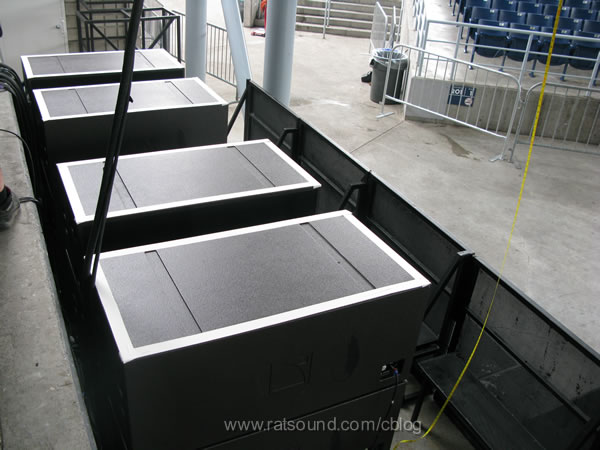
And though the Vortex occupies an 8 ft by 8 ft by 5.5 ft high space, it offers a relatively small point source-ish output relative to conventional setups.
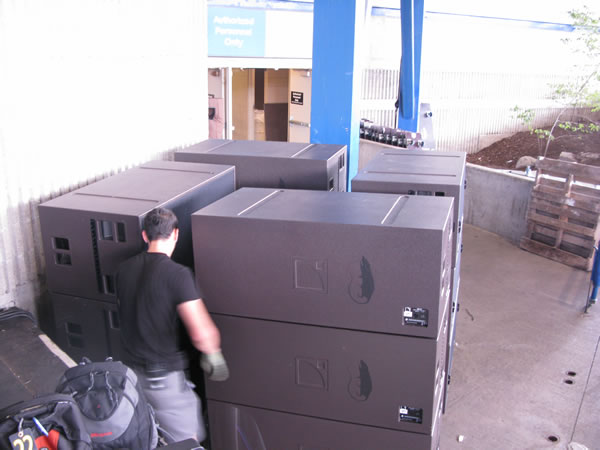
Oh, and this was the gig where we learned that the Vortex works best in open space and does not like to be near a wall. The Slotfires though, prefer a wall and shoot too much rear energy in open space. The V Fire:
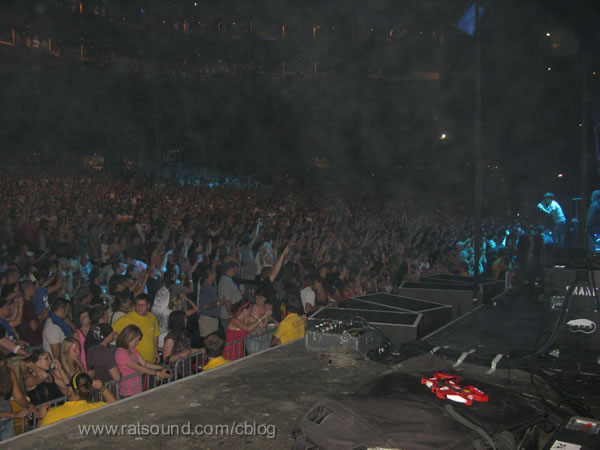
is the no wall or hollow stage version of the Slotfire but does not quite sound as good.
**** End Sound Nerd Speak ****
So as I mentioned, I adore the new adventure feeling of opening the bus door to a brand new world. And some days you just got to grit your teeth and bear it. Dammit, where in the heck is the parking lot? Is that a gig through yonder forest?
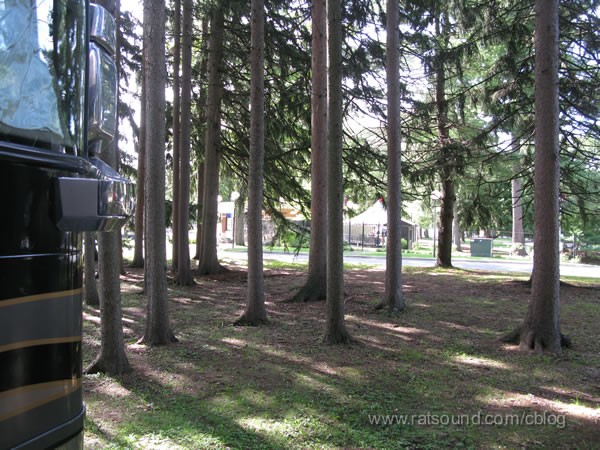
The luxuries for a touring roadie crew are endless, but at least we get our own are to hang out in and relax.
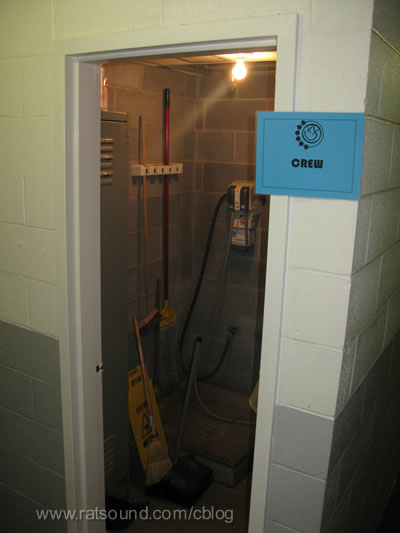
I did it, I finally broke down and labeled my console.
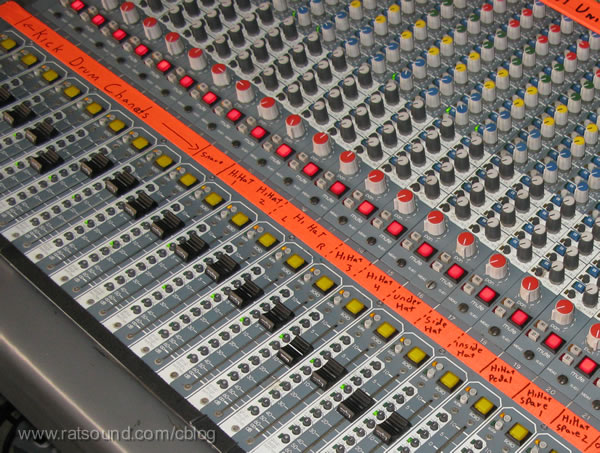
So this Branson guy from Virgin decides to toss a party for 30,000 or so of he best friends, for free. Multiple stages, Blink, Weezer, Jet and lots of other cool bands
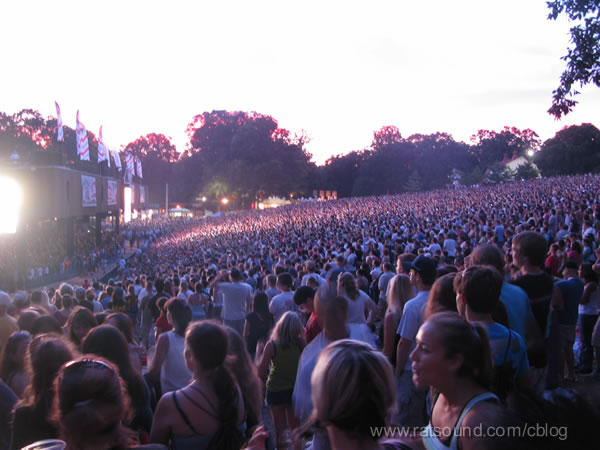
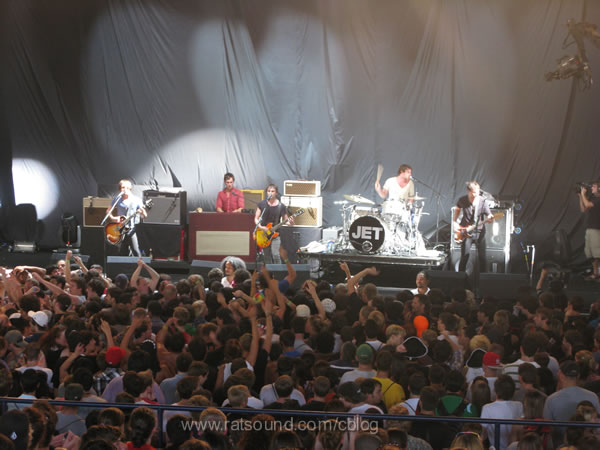
And what better way to make an entrance than to sky dive out of a helicopter onto the roof of the main stage at Blossom Amphitheater? None better! A bottle of Champagne
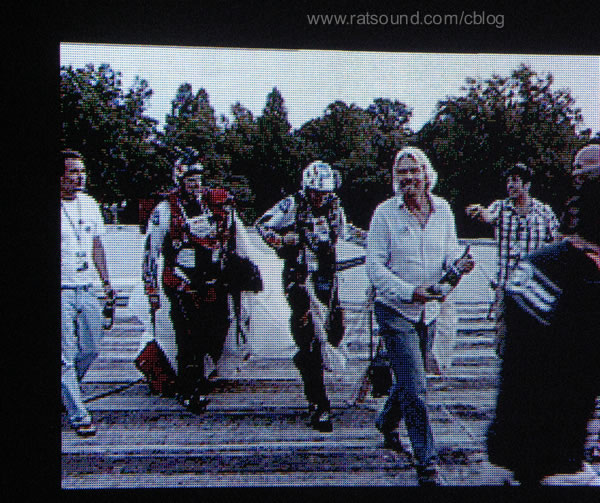
And away we rock. Can I say that this guy rules! And speaking of guys that rule, I am so happy to be touring once again with Craig Overbay! So great to hang with so many friends.
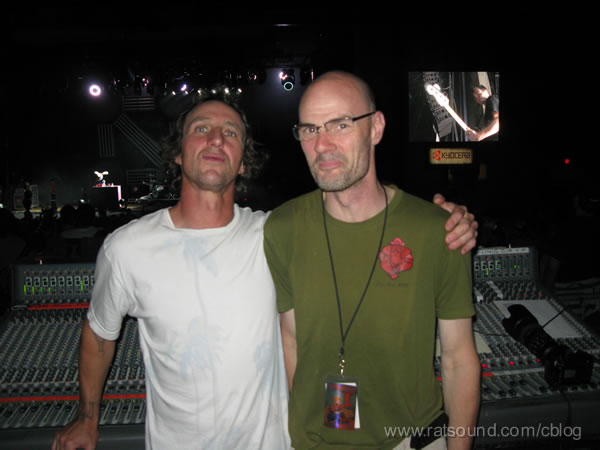
Dave Rat
Â
Comments
Display comments as Linear | Threaded
Alexandria wilson on :
Matt Francis on :
Dave Rat on :
Matt Francis on :